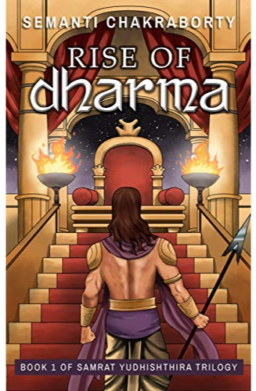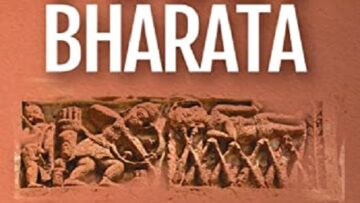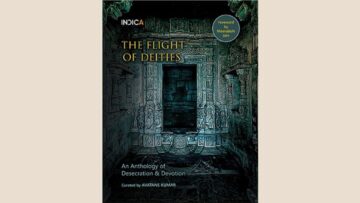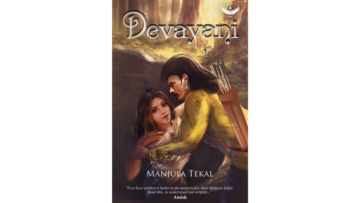Dharma is a very important concept in the Sanatana religion. Dharma refers to righteousness. It refers to doing one’s duty and being on the path of good. Dharma, as a person refers to Yama, the God of death who determines who deserves to go to heaven based on whether they stayed true to the path of Dharma. Yudhishtira, the eldest Pandava is the son of Dharma and is referred to as Dharmaraja Yudhishtira. The story of Yudhishtira is truly the story of Dharma.
Yudhishtira was born to Kunti through Yama. It was ordained that Yudhishtira would be the foremost among virtuous men on earth. He was blessed to be truthful in speech and destined to be the ruler of the earth. All that was ordained came true. But in order for him to become the ruler of the earth, a great war had to take place. This was the ‘Dharmayuddha’ that took place on the Kurukshetra battlefield.
The war between the forces of dharma and adharma took place with the stated intention of restoring Yudhishtira’s throne. The entire story of the Mahabharata focuses on the importance of dharma. Being the son of Dharma, Yudhishtira was seen as the embodiment of dharma on earth. It is thus natural to expect him to be the strongest and most liked character in the Mahabharata story.
The reality though is different. Most people have mixed feelings about Yudhishtira. Some perceive him as a gambling addict who gambled everything away. Others extoll his virtues as someone who performed his Kshatriya duty even at the cost of losing his empire and the freedom of his family members. There is no doubt that the character of Yudhishtira is one of the most complex ones from the Mahabharata.
Author Semanti Chakraborty sets out to narrate the story of Yudhishtira and does so in a trilogy. The trilogy does not just narrate the story of Yudhishtira but also narrates the story of the Mahabharata from the viewpoint of Yudhishtira. “The Rise of Dharma” is the first book in the trilogy and covers the initial story of the Mahabharata.
The book starts with the young Pandavas returning to Hastinapura after the death of their father, Pandu. The book depicts the relationship between the Pandavas and their cousins and narrates the story of the rivalry between the two. The entry of Drona, the training of the princes, and the demonstration tournament with the entry of Karna are all vividly described.
The book deals with the all-important Draupadi swayamwara and how Draupadi became wife to all the Pandavas. The relationship between Draupadi and Yudhishtira plays a very important role in his story. Even though Arjuna won her, she became the Empress since she was first married to Yudhishtira. The novel brings out the strong relationship between Draupadi and all the five brothers.
The author has tried to stick to the original Mahabharat of Vyasa through the storyline and has dwelt into each episode in detail using dialogues as the instrument.
The book introduces Krishna and his bonding with the Pandavas. The book goes into the burning of the Khandava forest and how the Pandavas built their empire. How Yudhishtira converted a barren land into a flourishing empire with satisfied citizens is a part of the novel.
In the final part of the book, the story shifts to the performing of the Rajasuya yagna that established Yudhishtira as the Emperor of Indraprastha. The killing of Jarasandha and the campaigns of the Pandava princes form a part of this book. The novel ends with Sishupala’s killing. The conclusion of the Rajasuya yagna, Duryodhana’s exploits in the palace of illusions, and the most important story of the dice game will probably be dealt in the second part of the trilogy.
Yudhishtira is considered as Dharmaraja but is questioning for his ‘adharmic’ behavior in the game of dice. To understand the behavior of Yudhishtira in the dice game, it is important to understand his personality. This is what the author has set out to do in this book and has done it quite well. The book lays down the foundation for the rest of the story to come.
Semanti’s writing style is crisp and the dialogues are engaging, which is why the book makes for an engrossing read. She uses the first-person narrative and the entire story is presented from Yudhishtira’s point-of-view. While this is the best way to present a story from the protagonist’s perspective, other characters generally do not get the full justice that they deserve. The author has tried to balance this well, giving space to different characters through their interactions with Yudhishtira.
The author has done her best to bring out the ‘Dharma’ aspect in Yudhishtira’s life. His thought processes, his adherence to the right path, and how he made decisions are brought out fairly well. The dilemma in his mind when his mother orders him to marry Draupadi and its resolution is dealt with well.
Having finished the first book in the trilogy, I am now waiting for the next part, where the focus would be on the crucial dice game and all that transpired. It would be interesting to know how the author presents the dice game that caused so much infamy for Yudhishtira. The unravelling of Yudhishtira’s character would make for an interesting read.
If you are interested to read a retelling of the Mahabharata that does not deviate from the original, this book is recommended. Anyone wanting to read the Mahabharata from Yudhishtira’s perspective can read this book and the rest of the trilogy. The author’s use of the first-person writing style and the good use of dialogues help in making this book quite engaging to read.
The book is available here for purchase.
Disclaimer: The opinions expressed in this article belong to the author. Indic Today is neither responsible nor liable for the accuracy, completeness, suitability, or validity of any information in the article.











